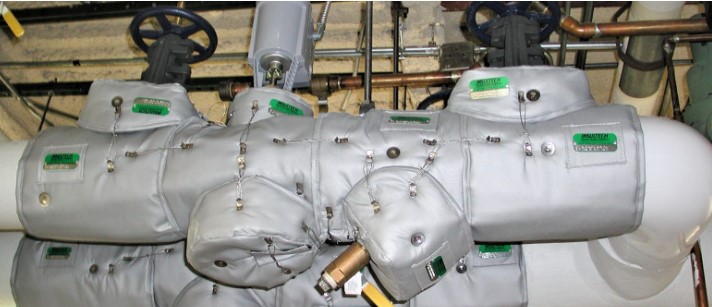In the dynamic landscape of industries like oil and gas, safety is paramount. Every step, every component, and every process must align with stringent safety standards to ensure the well-being of workers and the integrity of operations. Among the crucial elements contributing to safety on-site, insulation blankets stand out as unsung heroes. These seemingly simple components play a pivotal role in safeguarding personnel, equipment, and the environment in the challenging environments of Western Canada’s oil and gas sector.
Understanding Insulation Blankets
Insulation blankets are versatile, customizable covers designed to provide thermal insulation and protection for various components in industrial settings. Composed of high-quality materials such as fiberglass, mineral wool, or ceramic fibers, these blankets effectively trap heat and prevent energy loss, making them indispensable in environments where temperature control is critical.
Thermal Protection
One of the primary functions of insulation blankets is to offer thermal protection. In oil and gas facilities, where equipment operates at high temperatures, these blankets serve as barriers, minimizing heat transfer and reducing the risk of burns or fire incidents. By effectively containing heat, insulation blankets create safer working environments for personnel while also prolonging the lifespan of equipment.
Personnel Safety
Insulation blankets play a crucial role in safeguarding the well-being of workers on-site. In environments where pipelines, tanks, and other equipment are exposed to extreme temperatures, the risk of accidental contact is significant. However, by enclosing these components with insulation blankets, the surface temperature is reduced to a safe level, minimizing the likelihood of injuries caused by burns or thermal shocks.
Environmental Protection
Beyond protecting personnel, insulation blankets also contribute to environmental safety. In oil and gas operations, leaks or spills of hazardous substances can have severe consequences for ecosystems and surrounding communities. Insulation blankets help prevent such incidents by maintaining the integrity of pipelines and equipment, reducing the risk of corrosion, and containing leaks effectively.
Energy Efficiency
Insulation blankets not only enhance safety but also promote energy efficiency. By minimizing heat loss from equipment such as pipes, valves, and tanks, these blankets contribute to lower energy consumption and operational costs. In an industry where energy expenses constitute a significant portion of operational budgets, investing in insulation blankets can lead to substantial long-term savings.
Fire Protection
In the event of a fire outbreak, insulation blankets act as barriers, preventing the spread of flames and limiting the damage to equipment and infrastructure. With their fire-resistant properties, these blankets help contain fires, allowing personnel more time to evacuate safely and emergency responders to mitigate the situation effectively. This added layer of fire protection is invaluable in environments where the risk of fire hazards is inherent.
Customizability and Adaptability
One of the key advantages of insulation blankets is their customizability and adaptability to various applications. Whether it’s covering pipelines, valves, flanges, or equipment of different shapes and sizes, these blankets can be tailored to fit specific requirements. This versatility ensures comprehensive coverage and optimal thermal insulation, regardless of the complexity of the installation.
Durability and Longevity
Insulation blankets are engineered to withstand harsh environmental conditions, including exposure to moisture, chemicals, and UV radiation. Constructed from durable materials, these blankets offer long-term protection, withstanding the rigors of daily operations in oil and gas facilities. Their longevity translates to cost savings for companies, reducing the need for frequent replacements and maintenance.
Compliance with Regulatory Standards
In the heavily regulated oil and gas industry, compliance with safety standards is non-negotiable. Insulation blankets help companies meet and exceed regulatory requirements by mitigating risks associated with thermal hazards, fire incidents, and environmental contamination. By investing in quality insulation blankets, companies demonstrate their commitment to upholding the highest safety standards and ensuring the well-being of their workforce and the surrounding environment.
Conclusion
In conclusion, insulation blankets play a vital role in enhancing safety on-site in the oil and gas industry. From thermal protection and personnel safety to environmental conservation and energy efficiency, these versatile components offer multifaceted benefits that are indispensable in today’s industrial landscape. As stalwarts in Western Canada’s oil and gas sector, companies like G & R Insulating recognize the significance of insulation blankets in safeguarding personnel, equipment, and the environment. By prioritizing safety and investing in quality insulation solutions, companies can mitigate risks, improve operational efficiency, and uphold their commitment to excellence in every facet of their operations.




